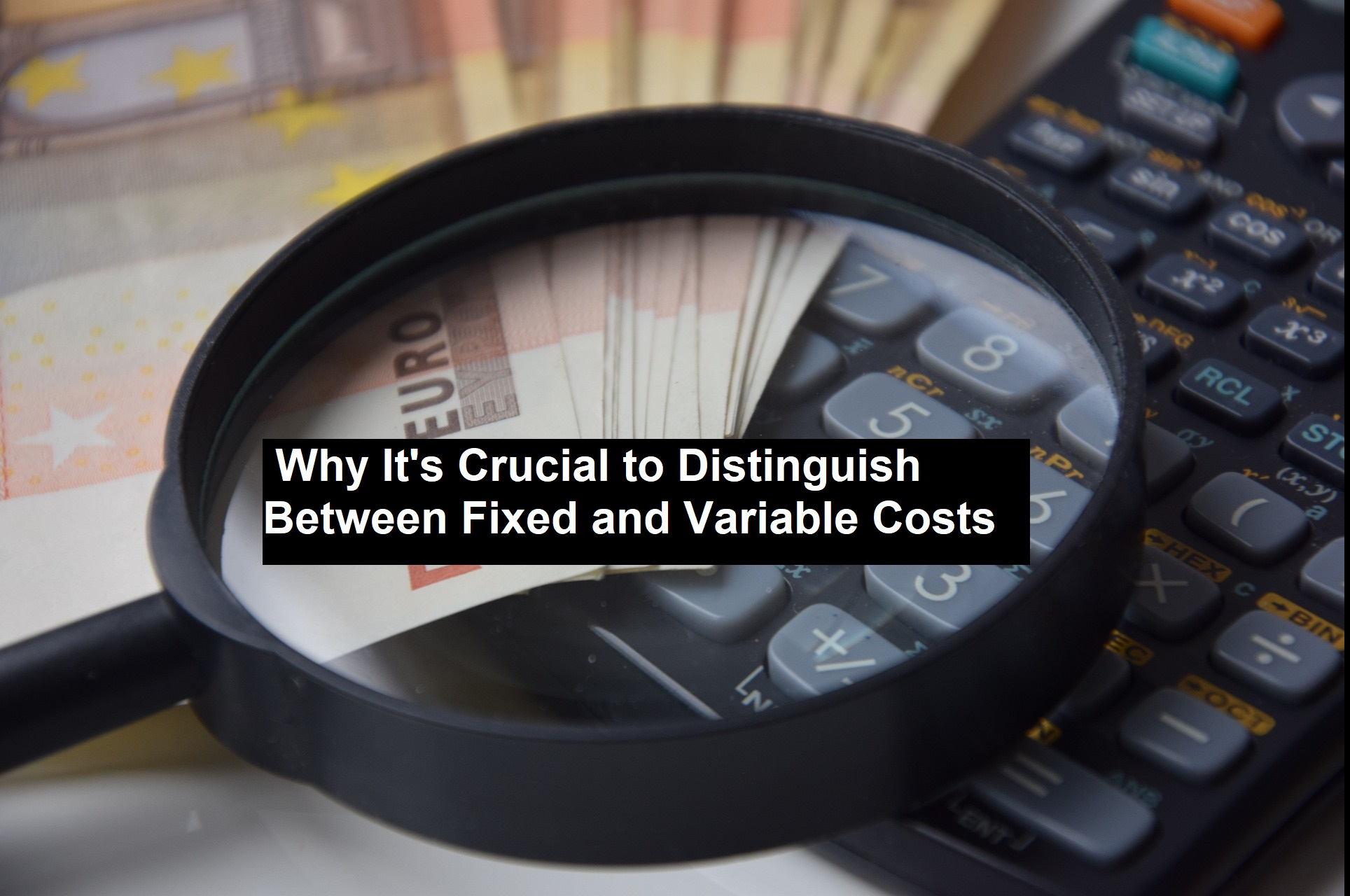Why It’s Crucial to Distinguish Between Fixed and Variable Costs
Understanding the difference between fixed and variable costs is fundamental for anyone involved in financial management or business planning. Understanding the distinction between fixed and variable costs is crucial for evaluating the profitability of different highest-paying side hustles and optimizing your income potential. This distinction is not just academic; it has practical implications that can significantly impact budgeting, pricing strategies, and overall financial stability. In this article, we will delve into the nature of fixed and variable costs, their impact on financial decision-making, and why it’s crucial to recognize and manage them effectively.
The Basics of Fixed Costs
Fixed costs are expenses that remain constant regardless of the level of production or sales activity. These costs do not fluctuate with changes in business volume or output. Common examples of fixed costs include rent, salaries, and insurance premiums. The distinction between fixed and variable costs is crucial for making informed decisions when investing in property, as it helps in accurately predicting potential returns and managing risks. For instance, a company leasing office space pays a fixed rent amount each month, whether they produce 100 units or 1,000 units of their product. Similarly, salaries of permanent staff remain unchanged regardless of business fluctuations.
The predictability of fixed costs provides a stable foundation for financial planning. Knowing that certain expenses will not vary allows businesses to budget more accurately and forecast long-term financial stability. In manufacturing, fixed costs such as machinery depreciation and factory rent contribute to the stability of production costs, enabling managers to plan with greater confidence. Click to learn more.
The Basics of Variable Costs
In contrast to fixed costs, variable costs change in direct proportion to the level of production or sales. These costs increase as output rises and decrease when production slows. Examples of variable costs include raw materials, utilities, and commissions. For instance, a company that manufactures electronic devices will see its cost of raw materials rise as it produces more units. Similarly, commissions paid to sales representatives will vary depending on the sales volume.
The fluctuating nature of variable costs impacts profit margins directly. When production increases, variable costs rise, but if sales do not proportionally increase, profit margins can shrink. Conversely, effective management of variable costs can lead to enhanced profitability when production volumes are high.
The Financial Impact of Distinguishing Costs
Recognizing and managing the distinction between fixed and variable costs has significant financial implications. Accurate budgeting and forecasting are enhanced by understanding these cost behaviours. When preparing financial forecasts, businesses can predict their cost structure more precisely by accounting for fixed costs that will remain constant and variable costs that will change with production levels.
Pricing strategies are another critical area influenced by cost distinction. To ensure profitability, businesses must set prices that cover both fixed and variable costs. This approach helps in maintaining a sustainable profit margin. For instance, if a company sells a product for $100, it must ensure that this price covers not only the variable costs of production but also contributes to covering fixed costs such as rent and salaries.
Strategic Implications
The distinction between fixed and variable costs also carries strategic implications. Cost control and efficiency are key to maintaining financial health. By identifying and managing fixed and variable costs effectively, businesses can discover areas for cost reduction. For example, negotiating better rates for raw materials or improving operational efficiencies can lower variable costs, enhancing overall profitability.
Investment decisions are influenced by the understanding of cost structures. When evaluating potential investments, businesses must consider how new ventures or expansions will impact both fixed and variable costs. This insight helps in assessing whether the investment will lead to a favourable return on investment or create financial strain.
Scalability and growth strategies are closely linked to cost understanding. Businesses planning for growth need to anticipate how increased production or sales will affect both fixed and variable costs. Understanding these dynamics helps in making informed decisions about scaling operations, managing cash flow, and maintaining profitability as the business grows.
Read: Top 10 Financial Risks for Businesses and How to Mitigate Them
Tools and Techniques for Managing Costs
Managing fixed and variable costs effectively requires the right tools and techniques. Accounting software and systems play a crucial role in tracking and categorising costs accurately. Modern accounting solutions provide features for distinguishing between fixed and variable costs, generating detailed reports, and facilitating financial analysis.
Implementing effective cost management strategies involves regularly reviewing and adjusting cost structures. Techniques such as cost-benefit analysis, activity-based costing, and budgeting can help in controlling and optimising both fixed and variable costs. Regular monitoring and analysis ensure that costs are managed efficiently and align with business objectives.
Common Misconceptions and Mistakes
Misclassifying costs can lead to significant financial misjudgments. One common error is treating a cost that varies with production as a fixed cost, which can distort budgeting and forecasting. For instance, mistakenly categorising raw materials as fixed costs could result in unrealistic financial projections and pricing strategies. Variable costs, such as materials and labor, can significantly impact the overall budget of home renovation projects.
Ignoring cost behaviour also has consequences. Overlooking the variability in costs can lead to inadequate pricing and budgeting, impacting profitability and financial stability. Businesses must remain vigilant in understanding and managing the behaviour of both fixed and variable costs to avoid such pitfalls.
Conclusion
Distinguishing between fixed and variable costs is more than just a theoretical exercise—it is a crucial aspect of financial management that impacts budgeting, pricing, and overall business strategy. By understanding the nature of these costs and their implications, businesses can make informed decisions, optimise their cost structures, and achieve greater financial stability. Effective cost management not only supports daily operations but also lays the groundwork for long-term success and growth.




